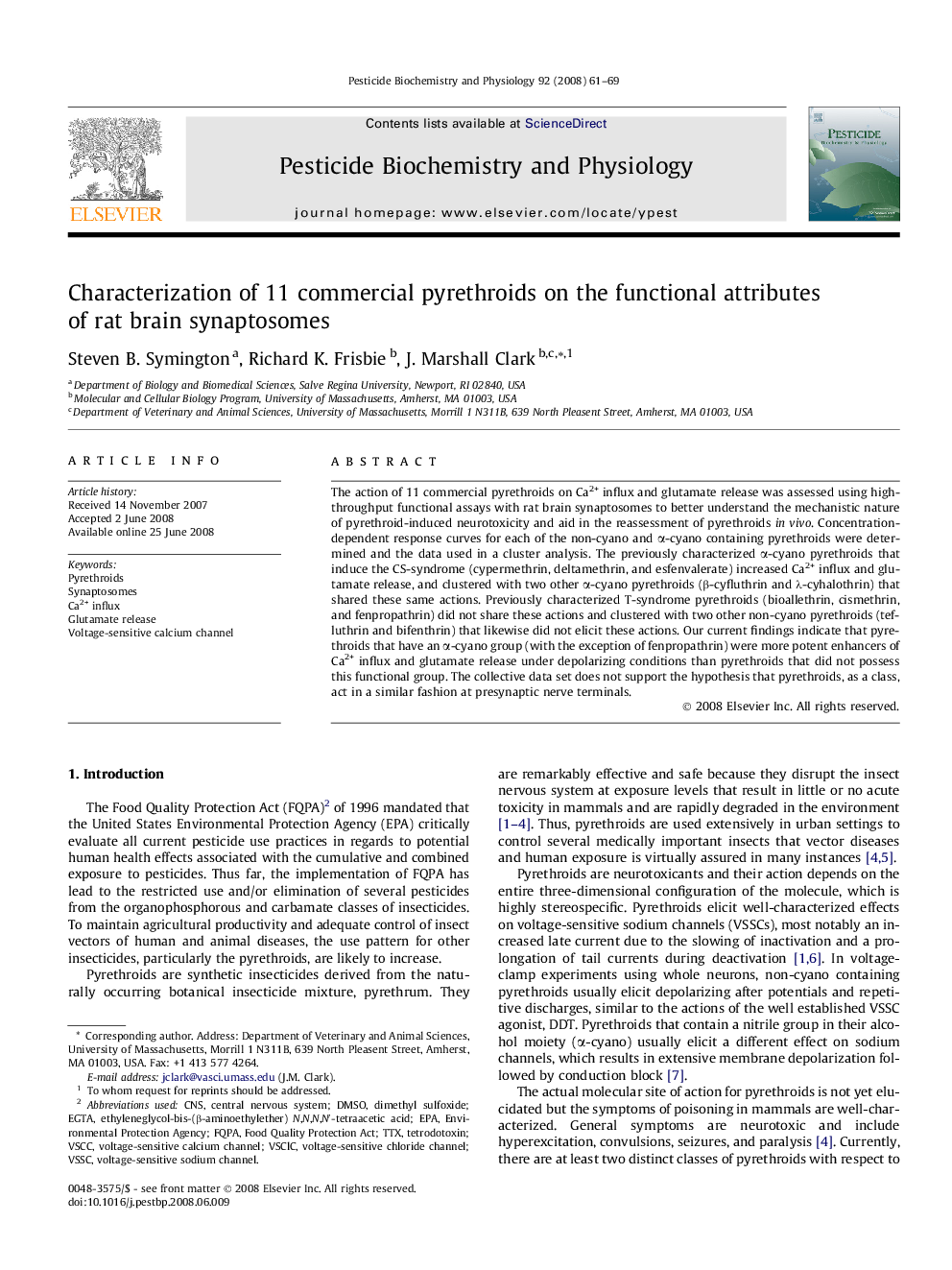| Article ID | Journal | Published Year | Pages | File Type |
|---|---|---|---|---|
| 2009925 | Pesticide Biochemistry and Physiology | 2008 | 9 Pages |
The action of 11 commercial pyrethroids on Ca2+ influx and glutamate release was assessed using high-throughput functional assays with rat brain synaptosomes to better understand the mechanistic nature of pyrethroid-induced neurotoxicity and aid in the reassessment of pyrethroids in vivo. Concentration-dependent response curves for each of the non-cyano and α-cyano containing pyrethroids were determined and the data used in a cluster analysis. The previously characterized α-cyano pyrethroids that induce the CS-syndrome (cypermethrin, deltamethrin, and esfenvalerate) increased Ca2+ influx and glutamate release, and clustered with two other α-cyano pyrethroids (β-cyfluthrin and λ-cyhalothrin) that shared these same actions. Previously characterized T-syndrome pyrethroids (bioallethrin, cismethrin, and fenpropathrin) did not share these actions and clustered with two other non-cyano pyrethroids (tefluthrin and bifenthrin) that likewise did not elicit these actions. Our current findings indicate that pyrethroids that have an α-cyano group (with the exception of fenpropathrin) were more potent enhancers of Ca2+ influx and glutamate release under depolarizing conditions than pyrethroids that did not possess this functional group. The collective data set does not support the hypothesis that pyrethroids, as a class, act in a similar fashion at presynaptic nerve terminals.
